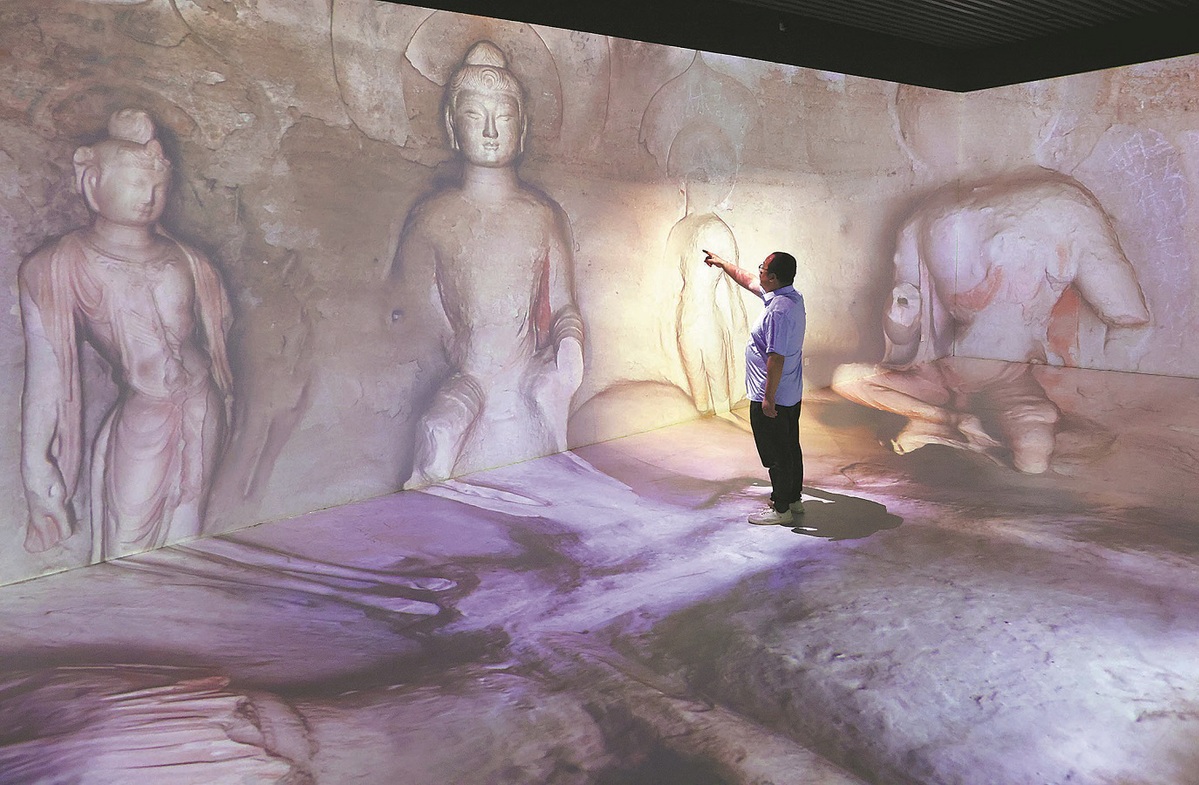

Digital revival
The initial step in collecting data to construct a grotto image involves using point-cloud technology, data representation of a 3D space, to capture its geometric shape. Data records are also made of the texture of a sculpture, along with the colors and patterns inside the grotto.
The digital restorers then merge all the data to create a detailed digital model of a sculpture, representing it as it would have been seen in its original setting.
Zhao, from Taiyuan University of Technology, said, "Despite our prior experience, the digital revival of Tianlong Mountain's Buddhist sculptures presented a substantial challenge for our team."
The mountainous terrain complicated providing power for the scanning equipment, while the grotto's dim lighting made it difficult to capture accurate textures and colors.
The massive size of the grottoes also made the collection of 3D data a major challenge.
Zhang Xiao, a professor of digital media art at Taiyuan University of Technology, said that the 3D scanning equipment was so large that it required two men to lift it, and scanning had to be performed on scaffolding approximately 7 to 8 meters high.
"Since the scanning equipment had to remain stationary, any movement would cause it to shake. This meant we often had to wait for a while before we could continue with the digital restoration," Zhang said, adding that students frequently had to remain on the scaffolding all day without coming down.
After the data was collected, the restoration team had to verify whether the fragments provided by the University of Chicago actually came from Tianlong Mountain and, if so, from which specific location.
Many sculptures were severely damaged when they were stolen and smuggled, Zhang said, adding that a sculpture kept by Harvard Art Museums, for example, faced significant "identity verification difficulties".
The sculpture was in the form of thin slabs, and removing them would have caused severe fragmentation.
"Museum staff abroad attempted repairs, but the result differed markedly from the original. Verifying whether it was from Tianlong Mountain required extensive research and discussion," Zhang said.
Zhao, the dean, said that many Buddha heads that were violently detached had shattered necks and shoulders, making their restoration extremely challenging. Sometimes, due to differing states of preservation, the head and torso appeared "unnatural" when joined together to form a digital image, he said.
Despite these hurdles, the team preserved sculptures that were in a disjointed or incomplete state. This allowed them to be connected to the original site without further modification, thereby maintaining their authenticity.
Zhao said in the final stage of the process, when the relics are being prepared for digital presentation, artists adjust the color of the overseas sculptures to match the current appearance of the grotto. Missing parts of a sculpture are also included to create visual harmony.
So far, the team has successfully digitally restored over 100 artifacts that were taken from 11 grottoes.